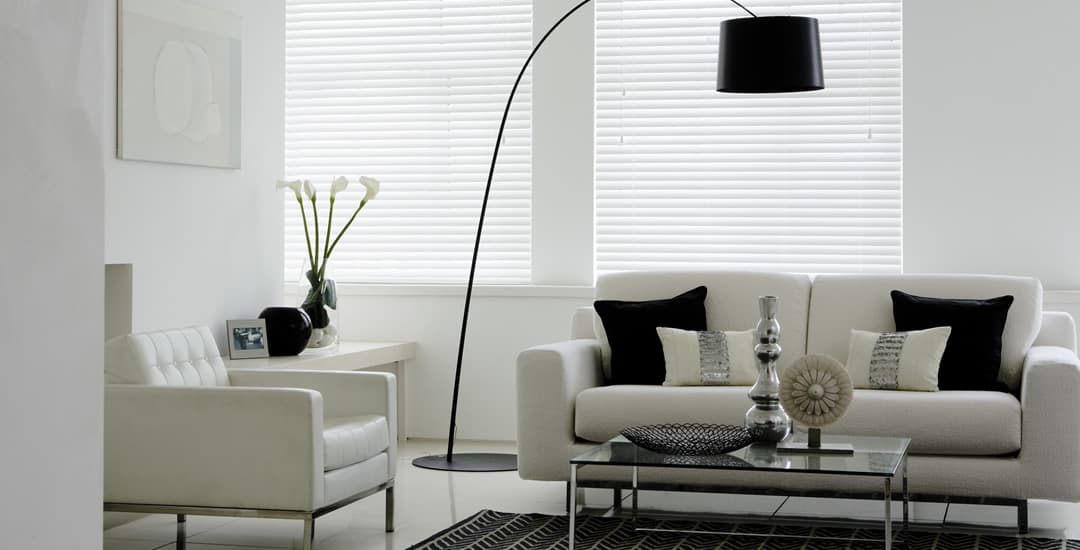
If you’re looking for the ultimate simplicity in window blinds, want to create a clean, minimalistic finish to your walls or are simply looking for a blank canvas to segue into the theme or tone of the rest of the room, you might want to consider white blinds.
White blinds offer an almost unlimited range of possibilities when it comes to how to style them or the styles they can work within, and depending on the type of blind you buy, there is absolutely no theme or décor style that they would look out of place in (other than perhaps a dungeon, but I’m guessing that dungeons aren’t big on windows anyway).
So, why choose white blinds, and how do you pick the right ones? This blog post will tell you about the various different types of blinds that can be made in white or that integrate white into them, as well as what works colour and style-wise with them and finally, if there are any downsides to white blinds.
How do you choose white blinds?
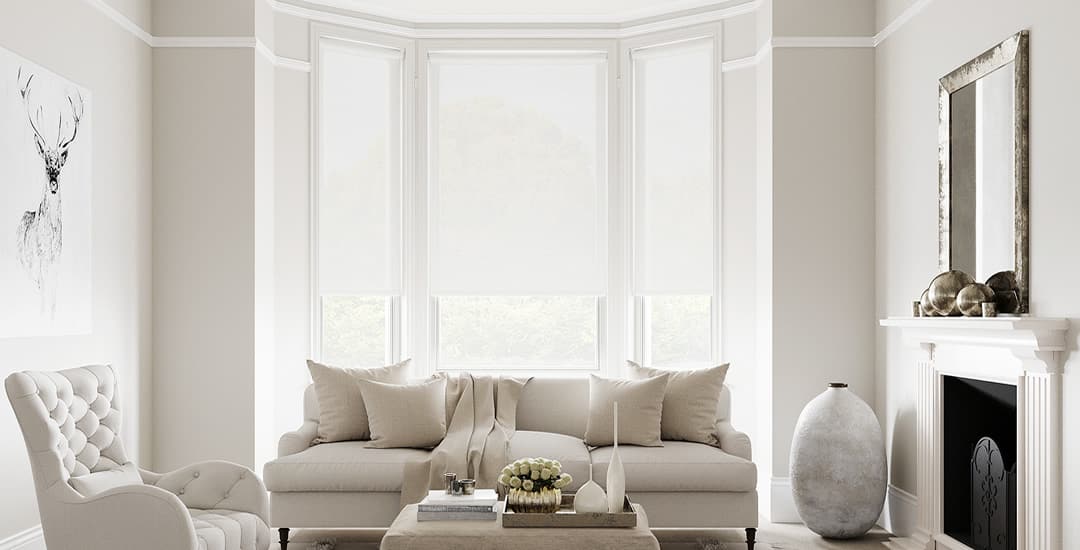
So, how do you choose white blinds? First of all you need to get to grips with the various different type of blinds on the market, consider the different functions and benefits of them (such as being waterproof, or being able to filter light and so on) and then look at the finishes and variants or shades of white the choices you like are available in.
As insane as it might sound for me to refer to “shades of white,” when you add in the impact different materials have on the finish (for instance, a white blind made of fabric will look rather different to one made of wood), the effect of textures, and potentially even the way another colour in the room bounces off the blind, “white as a colour” in this context isn’t really the simple concept it first seems.
Here’s a short run-down of the different types of white blinds you can get and the sort of options you would be able to choose between for each of them.
White roller blinds
White roller blinds are the lowest-cost option for white blinds, and present an unfussy, clean finish to your room. As well as plain white roller blinds, there are also options with a textured effect to them, a subtle pattern, and of course, lots of choice of roller blinds where white is the base or main colour, with a design or print over the top. White roller blinds may be made from polyester, or waterproof PVC/vinyl.
White Roman blinds
Much as is the case for white roller blinds, white Roman blinds can be found in a variety of fabrics ranging from cotton to silk, some with textured finishes, patterned options, and intricate designs either subtly overlaying the white base, or forming the main focal point of the blind.
White wooden blinds
White wooden blinds are one of the most popular paint colours, and your options range from matt to satin to gloss to chalk effect, all of which allow the natural grain and beauty of the wood to shine through. Additionally, you can choose ladder tapes in a contrasting colour to add an accent to the underlying white; or on the flipside, choose a natural wood finish or a different paint colour with crisp, clean white ladder tapes instead.
White faux-wood blinds
White faux-wood blinds are chosen more often than any other shade, these being made of smooth, wood effect PVC. As is the case with real wood white blinds, you can choose ladder tapes rather than ladder cords if you wish, giving you the option to pick a different colour for the blind and the tapes respectively.
White day and night blinds
Day and night blinds consist of alternating horizontal stripes, one being sheer and the other opaque. The sheer stripe of day and night blinds is often white or pearlescent in appearance, and the opaque stripe can also be white in colour, or a darker shade of your choosing.
White vertical blinds
Off-white and white vertical blinds and are among the most popular colours, and their louvres can be made in both smooth and textured options. Vertical blinds may be made of polyester, or waterproof PVC/vinyl.
White Venetian blinds
Enamel-painted white aluminium Venetian blinds can be made with a plain, textured, or metallic/pearlescent finish. We also offer perforated white Venetian blinds, allowing you to comprehensively protect your privacy whilst still permitting a reasonable level of light through into the room.
Can you get white blackout blinds?
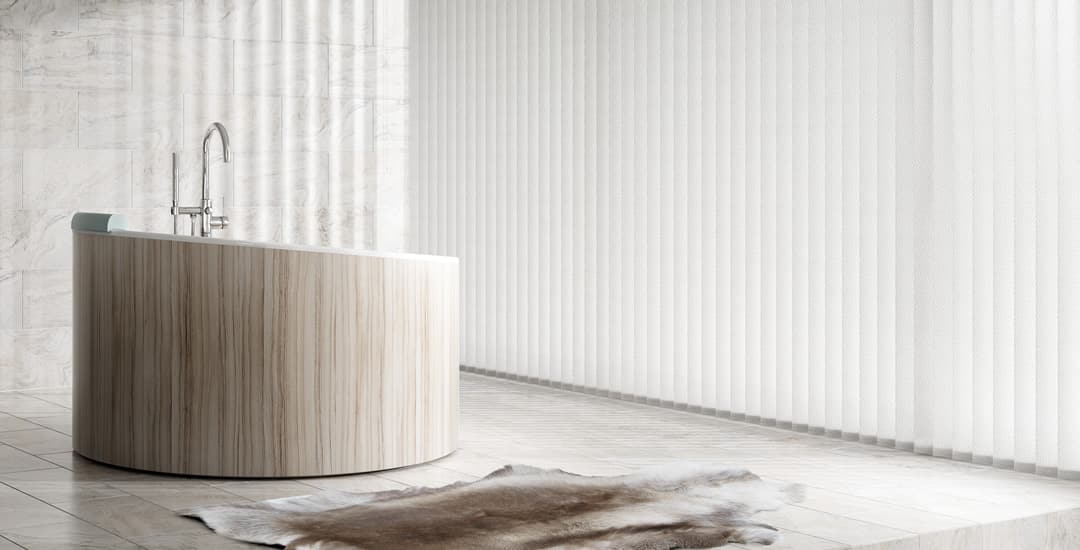
The idea of “white blackout” blinds might appear to be something of an oxymoron! However, when it comes to fabric blinds, the blackout lining itself is quite often white, not black at all.
It is the density of the blind’s fabric that achieves the blackout effect, not its colour, and so not only does this mean that the lining of many fabric blackout blinds is white, but that making white blackout blinds is no problem either.
Some coloured blinds look white from the outside…
In fact, when it comes to fabric blinds in general as opposed to blackout versions specifically, their lining material or backing material (the side that faces the outside world) will again often be white or off-white. This means that if you wish, you can choose blinds that uniformly look white from outside of the house, while the inward-facing side of the blinds themselves could be any colours and patterns of your choosing.
What styles or themes do white blinds work with?
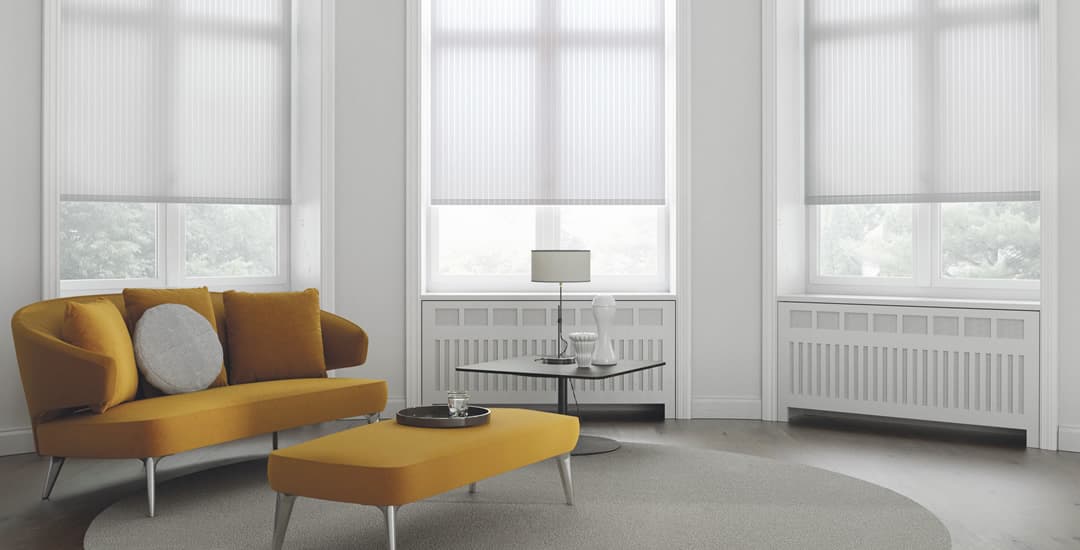
As a neutral colour, white can work within virtually any theme or style of your choosing, depending on the type of blind itself. For instance, some blinds are more modern in style than others and so would look somewhat out of place in, say, a period property – like vertical, Venetian, or day and night blinds.
However, these same blinds would all be a great match for a modern, minimalistic, or futuristic room, as well as any sort of room where a calming, uncluttered finish is desirable.
Roman blinds, roller blinds, and both wood and faux-wood white blinds have almost universal applications, depending where relevant on the design or pattern/accents that accompany the white itself.
What colours can you combine with white blinds?
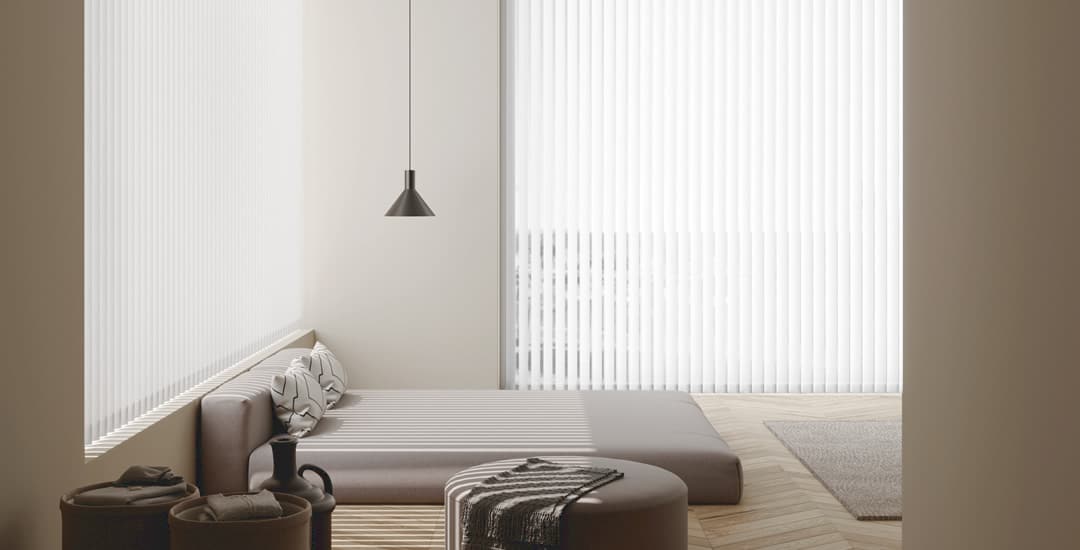
Quite literally any colour combines well with white blinds; both in terms of the potential to add accent colours or features (like the ladder tapes I mentioned earlier) to the blind itself, and in terms of the colour scheme of the wider room.
As long as the other colours you use complement each other, white will work itself into the mix perfectly well too!
Are there any downsides to choosing white blinds?
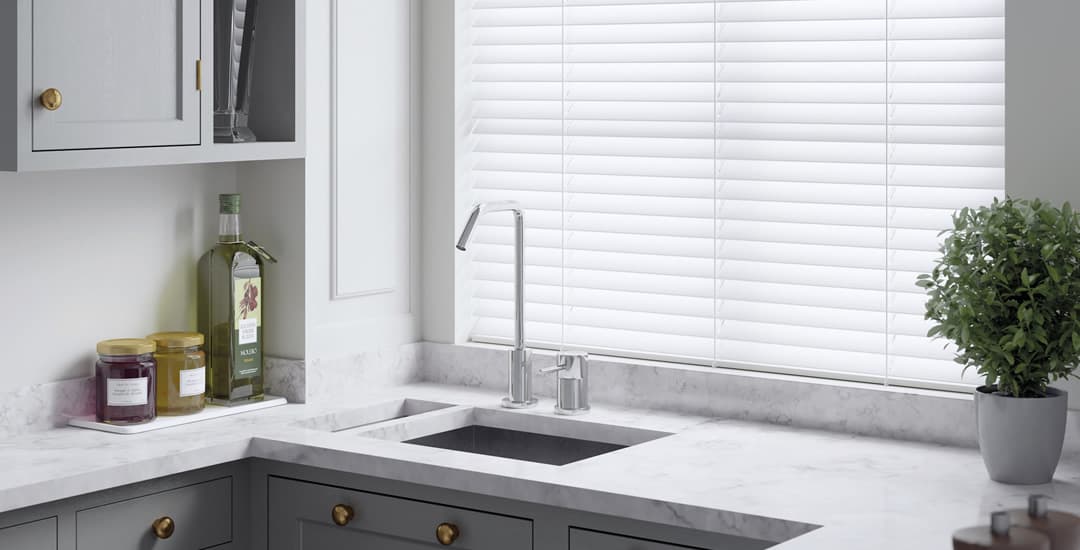
This answer to this question relies more or less on common sense; for instance, it might not be the best idea to put white blinds in a room where someone smokes heavily, otherwise the blind is apt to turn yellow from nicotine staining in short order.
When it comes to waterproof white blinds, these can be washed off with water and detergent, and so as long as you’re prepared for this and/or accept that they may look a little dingy in the room of a smoker between washes, it won’t be a problem.
However, Roman blinds, day and night blinds, wooden blinds, and the non-waterproof variants of vertical and Roman blinds can’t be washed in the true sense of the word, and so will ultimately pick up both yellowing and the smell of smoke, neither of which will be easy to remove without damaging the blind itself.
All of this holds true as well if your blinds are likely to get messy by other means; such as if you’re looking for kitchen blinds, and there’s a chance that the blind’s proximity to a food prep or eating area might mean it gets splashed or smeared with food. Cooking fats vaporising in the air will also eventually build up a film on surfaces, including your blind; this in turn attracts dust to stick to it, and as I am sure you can imagine, this can look quite grim on a blind that started off as white.
Again though, waterproof PVC and vinyl blinds don’t absorb liquids, mess, and vapour like non-waterproof blinds do, and they can also be cleaned with ease. As blinds for kitchens should be waterproof anyway, this might put white blinds back on the table, assuming that you accept that they’re apt to show up dirt more clearly than darker blinds and so, might need cleaning more regularly to maintain their cosmetic condition.
Just about the only other potential downside of white blinds I can think of is one that was reported back to me by a customer who bought some, and this doesn’t strictly see the blind itself as the culprit but is worth mentioning anyway.
Basically, her new white blinds were such a true, bright white that they caused her to rethink the meaning of “white” in terms of the other furniture and accessories surrounding the blind, as they made some of the older goods and things that had faded, discoloured, or developed a patina of age over time look off-white in comparison.
I suppose this is a similar tale to the old adage of how replacing a missing handle on a kitchen cabinet then makes the handles on the other cabinet doors look old, requiring all of those to be replaced too… These showing up the age and wear of the doors themselves, and… Well, I imagine you can see where I’m going with this by now.
P.S., and I feel like this should go without saying, but just in case: white blinds probably aren’t the greatest choice for a child’s room, for reasons that literally no parent will need me to spell out.




